-
 The Role of Oral Yeasts in the Development and Progression of Oral Squamous Cell Carcinoma: A Scoping Review
The Role of Oral Yeasts in the Development and Progression of Oral Squamous Cell Carcinoma: A Scoping Review -
 The Growth, Pathogenesis, and Secondary Metabolism of Fusarium verticillioides Are Epigenetically Modulated by Putative Heterochromatin Protein 1 (FvHP1)
The Growth, Pathogenesis, and Secondary Metabolism of Fusarium verticillioides Are Epigenetically Modulated by Putative Heterochromatin Protein 1 (FvHP1) -
 The Hidden Fortress: A Comprehensive Review of Fungal Biofilms with Emphasis on Cryptococcus neoformans
The Hidden Fortress: A Comprehensive Review of Fungal Biofilms with Emphasis on Cryptococcus neoformans
Journal Description
Journal of Fungi
Journal of Fungi
is an international, peer-reviewed, open access journal of mycology published monthly online by MDPI. The Medical Mycological Society of the Americas (MMSA) and the Spanish Phytopathological Society (SEF) are affiliated with the Journal of Fungi, and their members receive a discount on the article processing charges.
- Open Access— free for readers, with article processing charges (APC) paid by authors or their institutions.
- High Visibility: indexed within Scopus, SCIE (Web of Science), PubMed, PMC, CAPlus / SciFinder, AGRIS, and other databases.
- Journal Rank: JCR - Q1 (Mycology) / CiteScore - Q1 (Ecology, Evolution, Behavior and Systematics)
- Rapid Publication: manuscripts are peer-reviewed and a first decision is provided to authors approximately 17.7 days after submission; acceptance to publication is undertaken in 2.7 days (median values for papers published in this journal in the second half of 2024).
- Recognition of Reviewers: reviewers who provide timely, thorough peer-review reports receive vouchers entitling them to a discount on the APC of their next publication in any MDPI journal, in appreciation of the work done.
Impact Factor:
4.0 (2024);
5-Year Impact Factor:
4.5 (2024)
Latest Articles
Identification of a Novel Pathogen of Peanut Root Rot, Ceratobasidium sp. AG-A, and the Potential of Selected Bacterial Biocontrol Agents
J. Fungi 2025, 11(7), 472; https://doi.org/10.3390/jof11070472 (registering DOI) - 21 Jun 2025
Abstract
Peanut root rot poses a significant threat to global peanut production. In order to identify the new pathogen of peanut root rot in Shandong province, China, and to screen the effective antagonistic biocontrol strains against the identified pathogen, ten symptomatic plants from a
[...] Read more.
Peanut root rot poses a significant threat to global peanut production. In order to identify the new pathogen of peanut root rot in Shandong province, China, and to screen the effective antagonistic biocontrol strains against the identified pathogen, ten symptomatic plants from a peanut field (10% disease incidence) of Rongcheng were sampled for pathogen isolation. The predominant isolate RC-103 was identified as Ceratobasidium sp. AG-A through morphological characterization and phylogenetic analysis of ITS and RPB2 sequences. Pathogenicity was confirmed via Koch’s postulates. Three potent biocontrol strains, namely Bacillus subtilis LY-1, Bacillus velezensis ZHX-7, and Burkholderia cepacia Bc-HN1, were screened for effective antagonism against isolate RC-103 by dual-culture analysis. Their cell suspensions could significantly inhibit the hyphal growth of isolate RC-103, with the percentage inhibition of 54.70%, 45.86%, and 48.62%, respectively. Notably, the percentage inhibition of 10% concentration of the cell-free culture filtrate of B. subtilis LY-1 was as high as 59.01%, and the inhibition rate of volatile organic compounds of B. cepacia Bc-HN1 was 48.62%. Antagonistic mechanisms primarily involved the induction of hyphal abnormalities. In addition, the culture filtrate of these biocontrol bacteria significantly promoted the growth of peanut and increased the resistance of peanut plants to isolate RC-103, with the biocontrol efficiency reaching 41.86%. In summary, this study identified a novel pathogen of peanut root rot, Ceratobasidium sp. AG-A, which was reported for the first time in China, and screened three highly effective antagonistic biocontrol strains against Ceratobasidium sp. AG-A isolate RC-103, providing the scientific basis to study the epidemiology and management of this disease.
Full article
(This article belongs to the Special Issue Biological Control of Fungal Diseases, 2nd Edition)
Open AccessArticle
Optimized Combinations of Filtrates of Trichoderma spp., Metarhizium spp., and Bacillus spp. in the Biocontrol of Rice Pests and Diseases
by
Xifen Zhang, Lusheng Chen, Zhenxu Bai, Yaqian Li and Jie Chen
J. Fungi 2025, 11(7), 471; https://doi.org/10.3390/jof11070471 - 20 Jun 2025
Abstract
Trichoderma spp., Metarhizium spp., and Bacillus spp. are commonly used as biocontrol microorganisms domestically and internationally. However, microbial pesticides currently prepared from single living microorganisms have problems such as a short shelf life, particularly under stressful environment conditions. Secondary metabolites produced from biocontrol
[...] Read more.
Trichoderma spp., Metarhizium spp., and Bacillus spp. are commonly used as biocontrol microorganisms domestically and internationally. However, microbial pesticides currently prepared from single living microorganisms have problems such as a short shelf life, particularly under stressful environment conditions. Secondary metabolites produced from biocontrol microorganisms are comparatively stable when used under field conditions. This study screened the optimal combination of biocontrol metabolites, referred to as TMB, composed of culture filtrates from certain isolates of Trichoderma asperellum 10264, Bacillus subtilis S4-4-10, and Metarhizium anisopliae 3.11962 (1:4:1 (v/v)). RNA-seq analysis and transmission electron microscope observations were carried out to identify the major functions of the most effective culture filtrates against Magnaporthe oryzae (the pathogen causing rice blast disease) and Chilo suppressalis (an insect pest in rice cultivation). TMB was found to disrupt the midgut subcellular structure of C. suppressalis larvae and inhibit the expression of genes related to immunity, membrane components, protein synthesis, and other functions in C. suppressalis larvae and M. oryzae, thereby interfering with their normal growth, reproduction, and infection potential in rice. In addition, TMB was also able to promote rice growth and trigger host defense responses against infections by the target pests and pathogens. In summary, TMB generated different inhibitory activities against multiple targets in C. suppressalis and M. oryzae and induced plant immunity in rice. Therefore, it can be used as a new environmentally friendly agent or alternative to control rice pests and diseases.
Full article
(This article belongs to the Special Issue The Potential of Trichoderma, SynCom and Their Metabolites for Enhancing Crop Yield and Resistance)
►▼
Show Figures
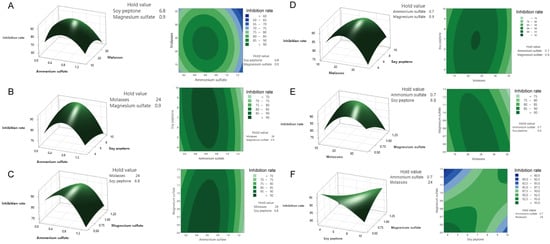
Figure 1
Open AccessArticle
Virulence Factors and Molecular Identification of Candida Species Causing Candidemia in Honduras
by
José Fernando Chávez, Bryan Ortiz, Roque López, Carlos Muñoz, Kateryn Aguilar, Isis Laínez-Arteaga, Celeste Galindo, Luis Rivera, Manuel G. Ballesteros-Monrreal, Kathy Montes, Mauricio Hernández, Asly Villeda Barahona, Stephanie Hereira-Pacheco and Gustavo Fontecha
J. Fungi 2025, 11(7), 470; https://doi.org/10.3390/jof11070470 - 20 Jun 2025
Abstract
Invasive fungal infections (IFIs), primarily caused by Candida species, represent a significant global public health concern due to their high mortality rates and growing antifungal resistance. In Honduras, data on their epidemiology remains scarce. This study aimed to characterize Candida species associated with
[...] Read more.
Invasive fungal infections (IFIs), primarily caused by Candida species, represent a significant global public health concern due to their high mortality rates and growing antifungal resistance. In Honduras, data on their epidemiology remains scarce. This study aimed to characterize Candida species associated with candidemia and assess key virulence factors. A total of 80 clinical isolates were collected from four hospitals in Honduras’s major cities, Tegucigalpa and San Pedro Sula. Identification was performed using both phenotypic and molecular methods. Hemolytic activity, phospholipase and protease production, and biofilm formation were evaluated. C. albicans and C. tropicalis were the most prevalent species (30% each), followed by C. parapsilosis (27.5%). Phenotypic methods misidentified 13.8% of the isolates. Most strains (96.3%) exhibited strong hemolytic activity. C. albicans showed the highest phospholipase activity, while C. tropicalis was the most robust film producer. These findings highlight an evolving epidemiological landscape characterized by an increasing prevalence of non-albicans Candida species, often less susceptible to antifungal agents, and diverse virulence profiles such as strong biofilm formation. This underscores the clinical need for accurate species-level identification through molecular diagnostics and ongoing surveillance to guide targeted antifungal therapy and enable early, locally adapted interventions.
Full article
(This article belongs to the Special Issue Clinical and Epidemiological Study of Mycoses)
►▼
Show Figures

Figure 1
Open AccessArticle
Integrated Proteomics and Metabolomics Reveal Regulatory Pathways Underlying Quality Differences Between Wild and Cultivated Ophiocordyceps sinensis
by
Chuyu Tang, Tao Wang, Yuejun Fan, Jie Wang, Mengjun Xiao, Min He, Xiyun Chang, Yuling Li and Xiuzhang Li
J. Fungi 2025, 11(7), 469; https://doi.org/10.3390/jof11070469 - 20 Jun 2025
Abstract
Ophiocordyceps sinensis, is an entomopathogenic fungus renowned for its medicinal properties, thriving in the frigid and high-altitude regions of the Qinghai–Tibet plateau. Given the limited availability of wild resources and the increasing recognition of their medicinal value, the cultivation of O. sinensis
[...] Read more.
Ophiocordyceps sinensis, is an entomopathogenic fungus renowned for its medicinal properties, thriving in the frigid and high-altitude regions of the Qinghai–Tibet plateau. Given the limited availability of wild resources and the increasing recognition of their medicinal value, the cultivation of O. sinensis was initiated. However, there is a paucity of research investigating the disparities in their quality. This study evaluated the primary physiological indicators of both wild and cultivated O. sinensis. It also employed proteome and untargeted metabolome approaches to elucidate the differences in quality and underlying mechanisms between the two types. The results revealed that the contents of key representative components, including polysaccharide, crude protein, adenosine, and mannitol, were higher in wild O. sinensis than in cultivated O. sinensis. A total of 499 differentially expressed proteins (DEPs), including 117 up-regulated and 382 down-regulated DEPs, were identified in wild and cultivated O. sinensis. Additionally, 369 up-regulated differentially accumulated metabolites (DAMs) and 737 down-regulated DAMs were also identified. Wild O. sinensis had higher relative levels of lysophospholipid metabolites, while cultivated O. sinensis had higher relative levels of aldehydes and carboxylic acids. Correlation analysis revealed that different habitats altered 47 pathways shared between the proteome and metabolome, including carbohydrate metabolism and energy metabolism. β-glucosidase and α-galactosidase play essential roles in carbohydrate catabolism and may indirectly influence amino acid synthesis through energy metabolic pathways. The differential expression of polyamine oxidase (PAO) could reflect variations in polyamine metabolism and ammonia production between wild and cultivated O. sinensis. These variations may consequently affect nitrogen homeostasis and the biosynthesis of nitrogen-containing compounds, ultimately leading to differences in nutritional quality. In conclusion, these findings offer a novel perspective on the applications of O. sinensis and serve as a reference for the targeted development of cultivated O. sinensis.
Full article
(This article belongs to the Special Issue Fungal Metabolomics and Genomics)
Open AccessCase Report
Invasive Aspergillosis with Intracranial Extension Initially Misdiagnosed as a Granulomatous Disease: A Case Report
by
Kouichi Asahi
J. Fungi 2025, 11(7), 468; https://doi.org/10.3390/jof11070468 - 20 Jun 2025
Abstract
Background: Invasive aspergillosis with orbital apex and intracranial involvement is rare and often misdiagnosed due to nonspecific imaging findings. Misinterpretation may lead to inappropriate therapies, such as corticosteroids, which can exacerbate fungal infections. Case Presentation: A 50-year-old immunocompetent woman with diabetes mellitus
[...] Read more.
Background: Invasive aspergillosis with orbital apex and intracranial involvement is rare and often misdiagnosed due to nonspecific imaging findings. Misinterpretation may lead to inappropriate therapies, such as corticosteroids, which can exacerbate fungal infections. Case Presentation: A 50-year-old immunocompetent woman with diabetes mellitus presented with right ptosis and systemic malaise. Magnetic resonance imaging (MRI) performed three months prior had shown a subtle low-signal lesion in the right orbital apex. The lesion was small and thought to represent a granulomatous process, with minimal systemic inflammation and only mild surrounding changes on imaging. Biopsy was considered too invasive at that stage, and the patient was placed under observation. Over time, her condition progressed, and repeat imaging revealed intracranial extension, including involvement of the cavernous sinus and frontal lobe. Differential diagnoses included granulomatous diseases such as sarcoidosis or tuberculosis, prompting empirical anti-tuberculosis treatment. However, the patient’s condition worsened, and biopsy of the sphenoid sinus revealed septated fungal hyphae consistent with Aspergillus species on Grocott staining. Voriconazole therapy was initiated, resulting in significant clinical and radiological improvement. Discussion: This case highlights the diagnostic challenge of identifying orbital apex aspergillosis with early MRI changes and demonstrates the risk of misdiagnosis as granulomatous disease. Differentiating fungal infections from other inflammatory etiologies based on subtle imaging features is critical, especially when considering immunosuppressive therapy. Conclusion: Clinicians should maintain a high index of suspicion for fungal infections in patients with progressive orbital apex lesions, even in the absence of classic immunosuppression. Early imaging review and biopsy are essential to prevent misdiagnosis and inappropriate treatment.
Full article
(This article belongs to the Special Issue Fungal Infections: New Challenges and Opportunities, 3rd Edition)
Open AccessArticle
Elicitor from Trichothecium roseum Activates the Disease Resistance of Salicylic Acid, Jasmonic Acid, and Ca2+-Dependent Pathways in Potato Tubers
by
Di Wang, Rong Liu, Haijue Zhang, Zhifei Pei, Xiaoyan Yu, Xueyan Ren and Qingjun Kong
J. Fungi 2025, 11(7), 467; https://doi.org/10.3390/jof11070467 - 20 Jun 2025
Abstract
The effects of a fungal elicitor from Trichothecium roseum on signal pathways of salicylic acid (SA), jasmonic acid (JA), and Ca2+ in potato tubers were investigated. The results showed that fungal elicitor treatment effectively inhibited the lesion diameter of Fusarium sulphureum in
[...] Read more.
The effects of a fungal elicitor from Trichothecium roseum on signal pathways of salicylic acid (SA), jasmonic acid (JA), and Ca2+ in potato tubers were investigated. The results showed that fungal elicitor treatment effectively inhibited the lesion diameter of Fusarium sulphureum in vivo, which was 17.5% lower than that of the control. In addition, fungal elicitor treatment triggered an increase in O2− production and H2O2 content. The fungal elicitor enhanced the activities and gene expression levels of isochorismate synthase (ICS), phenylalanine ammonia lyase (PAL), allene oxide cyclase (AOC), allene oxide synthase (AOS), lipoxygenase (LOX), and Ca2+-ATPase. Furthermore, the fungal elicitor promoted an increase in calmodulin (CaM) content. Protective enzymes (dismutase (SOD), catalase (CAT), polyphenol oxidase (PPO), chitinase (CHI), and β-1,3-glucanase (Glu)) and disease-resistance-related genes (PR1, PR2, and PDF1.2) were induced to be upregulated by elicitor treatment. These results indicated that the fungal elicitor induced disease resistance by accelerating the accumulation of reactive oxygen species (ROS), activating SA, JA, and Ca2+ signaling, and upregulating resistance genes. The results of this study revealed the molecular mechanism of fungal elicitor-induced resistance in the potato, which provides a theoretical basis for the mining of new, safe, and efficient elicitor-sourced antifungal agents and is of great importance for the effective control of potato dry rot disease.
Full article
(This article belongs to the Special Issue Control of Postharvest Fungal Diseases, 2nd Edition)
►▼
Show Figures

Figure 1
Open AccessArticle
Foliar Epichloë gansuensis Endophyte and Root-Originated Bacillus subtilis LZU7 Increases Biomass Accumulation and Synergistically Improve Nitrogen Fixation in Achnatherum inebrians
by
Yuanyuan Jin, Zhenjiang Chen, Kamran Malik and Chunjie Li
J. Fungi 2025, 11(7), 466; https://doi.org/10.3390/jof11070466 - 20 Jun 2025
Abstract
Although drunken horse grass (Achnatherum inebrians) can be simultaneously infected by the foliar endophyte Epichloë gansuensis and colonized by Bacillus subtilis, it remains unclear whether Epichloë endophyte symbiosis influences B. subtilis colonization, as well as how their interaction affects nitrogen
[...] Read more.
Although drunken horse grass (Achnatherum inebrians) can be simultaneously infected by the foliar endophyte Epichloë gansuensis and colonized by Bacillus subtilis, it remains unclear whether Epichloë endophyte symbiosis influences B. subtilis colonization, as well as how their interaction affects nitrogen fixation and assimilation. The purpose of the present study was to investigate whether E. gansuensis endophyte infection facilitates the colonization of B. subtilis in the roots of host plants, with a focus on understanding the interaction effects of the E. gansuensis endophyte and B. subtilis on plant growth and nutrient absorption. In this study, we measured the colony growth rate of B. subtilis LZU7 when co-cultured with E. gansuensis strains. In addition to an in vitro test, we investigated the root colonization of Epichloë endophyte-infected plants (E+) and Epichloë endophyte-free plants (E−) with the GFP-tagged B. subtilis LZU7 in an inoculation test. Furthermore, we evaluated the interactions between E. gansuensis endophyte symbiosis and B. subtilis LZU7 colonization on the dry weight, nitrogen fixation, nitrogen converting-enzyme activity, and nutrients for E+ and E− plants by labeling with 15N2. The results showed that the growth rates of B. subtilis LZU7 were altered and increased in a co-culture with the E. gansuensis endophyte. A significantly greater colonization of GFP-tagged B. subtilis LZU7 was detected in the roots of E+ plants compared with the roots of E− plants, suggesting that E. gansuensis endophyte symbiosis enhances the colonization of beneficial microorganisms. The combination of E. gansuensis endophyte symbiosis and B. subtilis LZU7 inoculation significantly altered the expression of the nitrogenase (nifH) gene, thereby promoting increased biological nitrogen fixation (BNF). The E. gansuensis endophyte infection and inoculation with B. subtilis LZU7 significantly increased δ15NAir in plants. Co-inoculation with the E. gansuensis endophyte and B. subtilis LZU7 significantly elevated NH4+ accumulation in the roots, depleted the NH4+ availability in the surrounding soil, and showed no measurable impact on the foliar NH4+ content. The observed alterations in the NH4+ content were linked to nitrogen-fixing microorganisms that promoted nitrogen fixation, thereby enhancing nitrogen uptake and contributing to greater biomass production in A. inebrians. Our findings highlighted the fact that a foliar symbiosis with the E. gansuensis endophyte enhances the recruitment of beneficial bacteria, and that the resulting interaction significantly impacts nitrogen fixation, assimilation, and allocation in host plants.
Full article
(This article belongs to the Section Environmental and Ecological Interactions of Fungi)
►▼
Show Figures
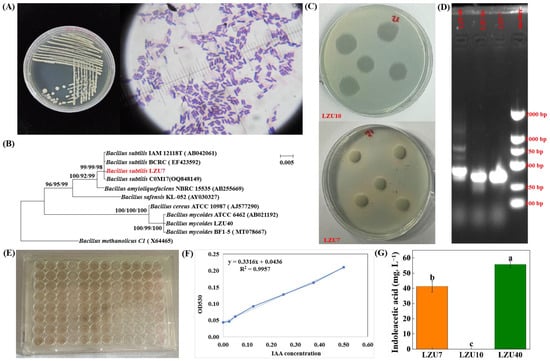
Figure 1
Open AccessArticle
Species Distribution and Antifungal Susceptibility Patterns of Invasive Candidiasis in a Belgian Tertiary Center: A 7-Year Retrospective Analysis
by
Sarah Cugnata, Rosalie Sacheli, Nathalie Layios and Marie-Pierre Hayette
J. Fungi 2025, 11(6), 465; https://doi.org/10.3390/jof11060465 - 19 Jun 2025
Abstract
Candidiasis is a major fungal infection worldwide, with invasive forms linked to high morbidity and mortality. The emergence of azole resistance in Candida parapsilosis causing candidemia led us to examine the epidemiology and antifungal susceptibility of Candida species at the University Hospital of
[...] Read more.
Candidiasis is a major fungal infection worldwide, with invasive forms linked to high morbidity and mortality. The emergence of azole resistance in Candida parapsilosis causing candidemia led us to examine the epidemiology and antifungal susceptibility of Candida species at the University Hospital of Liège between January 2017 and December 2023. A total of 916 isolates from blood or sterile body fluids, tissues, and abscesses were analyzed. Species identification was performed using MALDI-TOF MS and antifungal susceptibility testing via Sensititre YO10 AST was interpreted according to the CLSI guidelines. Candida albicans remained the predominant species (56%), followed by Nakaseomyces glabratus (19%), Candida parapsilosis (8%), and Candida tropicalis (7%). No significant shift toward non-albicans Candida species (NAC) was observed even during the COVID-19 pandemic, supporting the use of narrow-spectrum empirical therapy in selected patients. Fluconazole susceptibility was high in C. albicans (98.8%), whereas N. glabratus and C. tropicalis showed high resistance rates with 10.1% and 16.9%, respectively. C. parapsilosis showed stable fluconazole susceptibility across the study period. Echinocandins demonstrated excellent activity (95.6–100%), and amphotericin B was effective against nearly all isolates. This seven-year surveillance at the University Hospital of Liège confirms that while C. albicans remains the predominant and highly susceptible species, rising azole resistance in non-albicans Candida—particularly N. glabratus and C. tropicalis—highlights the critical need for ongoing local epidemiological monitoring to guide effective and targeted antifungal therapy.
Full article
(This article belongs to the Special Issue Personalized Mycology)
►▼
Show Figures
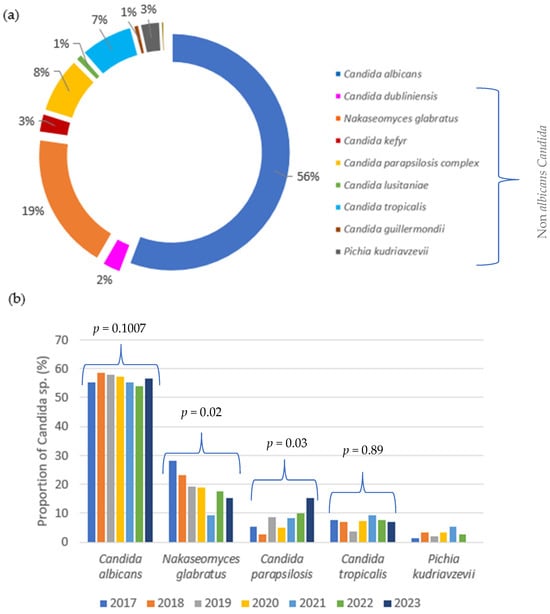
Figure 1
Open AccessBrief Report
Assessment of Entomopathogenic Fungi Activity from the Fiocruz Amazônia Collection in Anopheles aquasalis Mosquitoes
by
Natalia Stefany Pereira, Camila Fabbri, Kemily Nunes Moya, Ana Carolina Monteiro Ferreira, Francy’s Sayara Andrade, Rosa Amélia Santana, Claudia Maria Ríos-Velásquez, Priscila Ferreira de Aquino and Stefanie Costa Pinto Lopes
J. Fungi 2025, 11(6), 464; https://doi.org/10.3390/jof11060464 - 18 Jun 2025
Abstract
►▼
Show Figures
Malaria remains a public health issue across the world. Different methods have been analyzed to achieve this disease’s elimination, such as the vector control of Anopheles spp. Control strategies include the use of different classes of insecticides, although the accelerated evolution of vectors
[...] Read more.
Malaria remains a public health issue across the world. Different methods have been analyzed to achieve this disease’s elimination, such as the vector control of Anopheles spp. Control strategies include the use of different classes of insecticides, although the accelerated evolution of vectors resistant to them makes the development of alternative control methods necessary. Therefore, entomopathogenic fungi have been considered to be promising biopesticides, given that they are safe for human beings and the environment. This study aimed to evaluate the entomopathogenic activity of fungi collected in the Amazon Rainforest against adult female Anopheles aquasalis mosquitoes. Females were exposed to four different species of fungi and observed daily to evaluate their survival rate. Also, fungi species’ behavior was analyzed through scanning electron microscopy (SEM). Those exposed to Trichoderma harzianum and Penicillium citrinum had their survival rate reduced. SEM confirmed the development of fungi on the mosquitoes after 48 h. The findings suggest that the entomopathogenic potential of the fungi used in this study should be considered, given the reduction in the survival rate of Anopheles aquasalis mosquitoes.
Full article
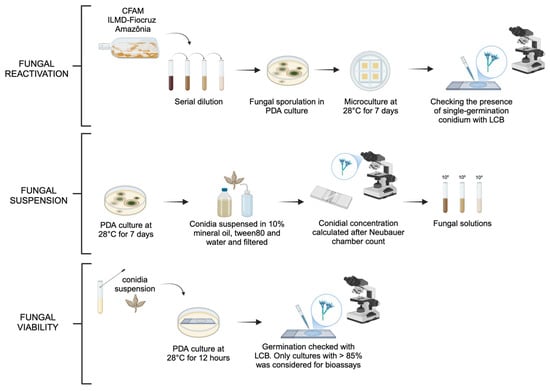
Figure 1
Open AccessArticle
New Therapeutic Options for Fusariosis: A Patent Review (2008–2023)
by
Izadora Dillis Faccin, Túlio Máximo Salomé, Gleyce Hellen de Almeida de Souza, Leonardo da Costa Xavier, Izabel Almeida Alves, Vanessa Castro Felix Lima, Fabíola Lucini, Simone Simionatto and Luana Rossato
J. Fungi 2025, 11(6), 463; https://doi.org/10.3390/jof11060463 - 18 Jun 2025
Abstract
►▼
Show Figures
Fusariosis is an infection caused by the fungus Fusarium spp., which is pathogenic to both plants and humans. The disease presents several clinical manifestations and epidemiological patterns. Current treatment relies on azoles and polyenes, but increasing antifungal resistance requires the exploration of new
[...] Read more.
Fusariosis is an infection caused by the fungus Fusarium spp., which is pathogenic to both plants and humans. The disease presents several clinical manifestations and epidemiological patterns. Current treatment relies on azoles and polyenes, but increasing antifungal resistance requires the exploration of new therapeutic options. This study reviewed patents related to the treatment of Fusariosis from the last 15 years (up to June 2023). The search identified 318 patents, categorized by identification code, publication date, type of application and mechanism of action, using the International Patent Classification and Cooperative Patent Classification systems. In addition, we conducted a bibliographic search in the PubMed database using the same criteria to identify the number of scientific articles. Of the 318 patents, 21 targeted Fusarium infections in humans. The years 2014 and 2018 stood out with three patents each, while the same period recorded an average of 58 published articles. The patents addressed mechanisms such as drug delivery, gene expression, immunotherapy, engineered drugs, and novel compounds. This research highlights the urgent need for continued innovation in therapeutic technologies to effectively treat Fusarium wilt.
Full article
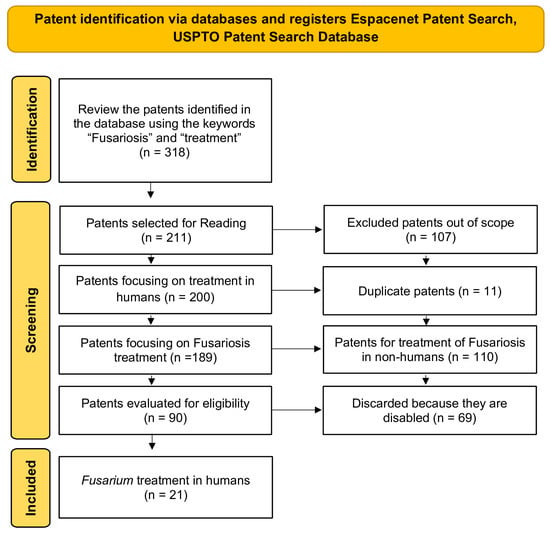
Figure 1
Open AccessArticle
Histoplasmosis in Immunocompromised and Immunocompetent Patients in Guadeloupe
by
Constance Lahuna, Tanguy Dequidt, Pierre Postel-Vinay, Sandrine Peugny, Marwan Haboub, Samuel Markowicz and Muriel Nicolas
J. Fungi 2025, 11(6), 462; https://doi.org/10.3390/jof11060462 - 18 Jun 2025
Abstract
Background: Histoplasma capsulatum is an environmentally acquired dimorphic fungus. Infection results in histoplasmosis, a clinical syndrome often underdiagnosed and that may progress to life-threatening disseminated infection not only in immunocompromised individuals but also, following high-level exposure, in immunocompetent hosts. Epidemiological data from
[...] Read more.
Background: Histoplasma capsulatum is an environmentally acquired dimorphic fungus. Infection results in histoplasmosis, a clinical syndrome often underdiagnosed and that may progress to life-threatening disseminated infection not only in immunocompromised individuals but also, following high-level exposure, in immunocompetent hosts. Epidemiological data from Caribbean regions, and particularly from Guadeloupe, remain limited. Methods: We performed a retrospective cohort study of all microbiologically confirmed histoplasmosis cases managed at the University Hospital of Guadeloupe between January 2014 and October 2024. Demographic, clinical, diagnostic, therapeutic, and outcome data were retrieved from medical records and analyzed using descriptive statistics. Results: Forty-two patients met the inclusion criteria, corresponding to an estimated annual incidence rate of 1 per 100,000 inhabitants. The median age was 52 years, and the male-to-female ratio was 4:1. An underlying immunocompromising condition was present in 85% of cases, most commonly HIV infection (48%). Common clinical features included weight loss (97%), fever (89%), and pulmonary manifestations (81%). The mean time to diagnosis from hospital admission was 3.5 ± 10.3 days. Direct microscopy was positive in 67% of cases, and culture was positive in 88% of cases. Intravenous liposomal amphotericin B constituted the initial therapy in 71% of patients. Overall, the in-hospital mortality was 29%, rising to 40% among HIV-positive individuals. The 30-day survival rate was 71%. Conclusions: Histoplasmosis in Guadeloupe is under-recognized and associated with appreciable morbidity and mortality in both immunocompromised and immunocompetent patients. The wider availability of rapid diagnostics and heightened clinical vigilance are essential to shorten diagnostic delays and improve outcomes in this Caribbean population.
Full article
(This article belongs to the Section Fungal Pathogenesis and Disease Control)
►▼
Show Figures
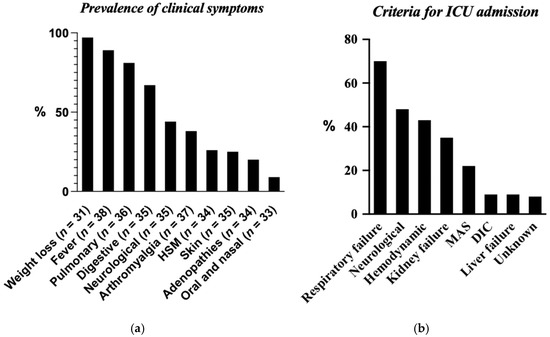
Figure 1
Open AccessArticle
Telomere-to-Telomere Assembly of the Cordyceps militaris CH1 Genome and Integrated Transcriptomic and Metabolomic Analyses Provide New Insights into Cordycepin Biosynthesis Under Light Stress
by
Yang Yang, Jingjing Huang, Gangqiang Dong and Xuebo Hu
J. Fungi 2025, 11(6), 461; https://doi.org/10.3390/jof11060461 - 18 Jun 2025
Abstract
Cordyceps militaris, a model species in the genus Cordyceps, is widely distributed globally and is known for its significant medicinal value. It has been traditionally used in Chinese medicine to enhance immunity, alleviate fatigue, and treat tumors, among other therapeutic purposes. Here,
[...] Read more.
Cordyceps militaris, a model species in the genus Cordyceps, is widely distributed globally and is known for its significant medicinal value. It has been traditionally used in Chinese medicine to enhance immunity, alleviate fatigue, and treat tumors, among other therapeutic purposes. Here, we successfully assembled a telomere-to-telomere (T2T) level genome of C. militaris CH1 using PacBio HiFi and Hi-C technologies. The assembled genome is 32.67 Mb in size, with an N50 of 4.70 Mb. Gene prediction revealed a total of 10,749 predicted genes in the C. militaris CH1 genome, with a gene completeness of 99.20%. Phylogenetic analysis showed the evolutionary relationship between C. militaris CH1 and other Cordyceps species, suggesting that the divergence between this strain and C. militaris ATCC 34164 occurred approximately 1.36 Mya. Combined transcriptomic and metabolomic analyses identified 842 differentially expressed genes and 2052 metabolites that were significantly altered under light stress, primarily involving key pathways related to amino acid metabolism, purine metabolism, and secondary metabolite biosynthesis. Joint analysis of genes and metabolites revealed 79 genes coding for enzymes associated with the synthesis of adenine and adenosine, with the expression of 52 genes being upregulated, consistent with the accumulation trends of adenine and adenosine. Four gene clusters related to the synthesis of cordycepin were identified, with a significant upregulation of cns3 (FUN_003263), suggesting that light stress may promote cordycepin biosynthesis. This comprehensive analysis not only provides new insights into the genomics, metabolomics, and functional gene research of C. militaris CH1 but also offers a potential biological foundation for understanding the synthesis mechanisms of cordycepin and its efficient production.
Full article
(This article belongs to the Section Fungal Genomics, Genetics and Molecular Biology)
►▼
Show Figures
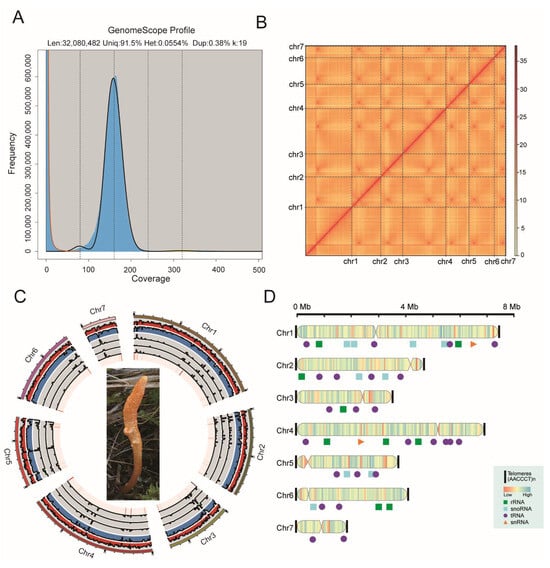
Figure 1
Open AccessArticle
Development and Characterization of Mycelium-Based Composite Using Agro-Industrial Waste and Ganoderma lucidum as Insulating Material
by
Gustavo Jiménez-Obando, Juan Sebastian Arcila, Ricardo Augusto Tolosa-Correa, Yenny Leandra Valencia-Cardona and Sandra Montoya
J. Fungi 2025, 11(6), 460; https://doi.org/10.3390/jof11060460 - 17 Jun 2025
Abstract
Mycelium-based composites (MBCs) have emerged as eco-friendly alternatives, utilizing fungal mycelium as a natural binder for agro-industrial residues. This study focuses on developing an MBC based on abundant waste in Colombia, pith Arboloco (A) (Montanoa quadrangularis), a plant endemic to the
[...] Read more.
Mycelium-based composites (MBCs) have emerged as eco-friendly alternatives, utilizing fungal mycelium as a natural binder for agro-industrial residues. This study focuses on developing an MBC based on abundant waste in Colombia, pith Arboloco (A) (Montanoa quadrangularis), a plant endemic to the Colombian–Venezuelan Andes with outstanding insulating properties, and natural fiber of Kikuyu grass (G) (Cenchrus clandestinus), utilizing Ganoderma lucidum as an agent to form a mycelium network in the MBC. Three formulations, T (100% A), F1 (70% A/30% G), and F2 (30% A/70% G), were evaluated under two different Arboloco particle size ranges (1.0 to 5.6 mm) for their physical, mechanical, and thermal properties. The Arboloco particle sizes did not show significant differences in the MBC properties. An increase in Kikuyu grass proportion (F2) demonstrated superior density (60.4 ± 4.5 kg/m3), lower water absorption (56.6 ± 18.4%), and better compressive strength (0.1686 MPa at 50% deformation). Both mixing formulations (F1–F2) achieved promising average thermal conductivity and specific heat capacity values of 0.047 ± 0.002 W m−1 K−1 and 1714 ± 105 J kg−1 K−1, comparable to commercial insulation materials. However, significant shrinkage (up to 53.6%) and high water absorption limit their scalability for broader applications. These findings enhance the understanding of MBC’s potential for non-structural building materials made of regional lignocellulosic waste, promoting a circular economy in waste management for developing countries.
Full article
(This article belongs to the Special Issue Fungal Biotechnology and Application 3.0)
►▼
Show Figures

Graphical abstract
Open AccessArticle
Hidden Treasures of Colombia’s Pacific Mangrove: New Fungal Species and Records of Macrofungi (Basidiomycota)
by
Viviana Motato-Vásquez, Lina Katherine Vinasco-Diaz, Jorge M. Londoño-Caicedo and Ana C. Bolaños-Rojas
J. Fungi 2025, 11(6), 459; https://doi.org/10.3390/jof11060459 - 17 Jun 2025
Abstract
Mangrove-associated fungi represent a diverse but understudied group of eukaryotic organisms, especially in the Neotropics. The Colombian Pacific region, with approximately 1300 km of coastline covered with 194,880 ha of mangrove forests that remain largely unexplored for macrofungal diversity, is recognized as a
[...] Read more.
Mangrove-associated fungi represent a diverse but understudied group of eukaryotic organisms, especially in the Neotropics. The Colombian Pacific region, with approximately 1300 km of coastline covered with 194,880 ha of mangrove forests that remain largely unexplored for macrofungal diversity, is recognized as a global biodiversity hotspot. This study aimed to catalog the macrofungi associated with mangrove ecosystems in Colombia, integrating morphological characterization and molecular phylogenetics, focusing on three Valle del Cauca Pacific coast localities. A total of 81 specimens were collected from both living trees and decaying wood. Detailed macroscopic and microscopic analyses were conducted, and DNA sequences from two ribosomal DNA barcode regions (ITS and LSU) were generated for 43 specimens. Three new species—Neohypochnicium manglarense, Phlebiopsis colombiana, and Porogramme bononiae—were documented. In addition, eight species were reported as new records for both Colombia and mangrove ecosystems, including Microporus affinis, Paramarasmius palmivorus, Phlebiopsis flavidoalba, Porogramme brasiliensis, Resinicium grandisporum, Trametes ellipsospora, T. menziesii, and T. polyzona. Although previously recorded in Colombian terrestrial ecosystems, Lentinus scleropus and Oudemansiella platensis are globally reported here for the first time from mangrove habitats. Furthermore, Fomitopsis nivosella and Punctularia strigosozonata were documented for the first time in Colombia. This study addresses the first exploration of mangrove-associated macrofungi in the country and provides new insights into the hidden fungal diversity and potential of mangrove ecosystems as a latent niche for basidiomycete dispersal along Colombia’s Pacific coast.
Full article
(This article belongs to the Special Issue Fungal Diversity in Various Environments, 4th Edition)
►▼
Show Figures

Figure 1
Open AccessReview
Fungal Coculture: Unlocking the Potential for Efficient Bioconversion of Lignocellulosic Biomass
by
Rafael Icaro Matos Vieira, Alencar da Silva Peixoto, Antonielle Vieira Monclaro, Carlos André Ornelas Ricart, Edivaldo Ximenes Ferreira Filho, Robert Neil Gerard Miller and Taísa Godoy Gomes
J. Fungi 2025, 11(6), 458; https://doi.org/10.3390/jof11060458 - 17 Jun 2025
Abstract
Microbial decomposition of persistent natural compounds such as phenolic lignin and polysaccharides in plant cell walls plays a crucial role in the global carbon cycle and underpins diverse biotechnological applications. Among microbial decomposers, fungi from the Ascomycota and Basidiomycota phyla have evolved specialized
[...] Read more.
Microbial decomposition of persistent natural compounds such as phenolic lignin and polysaccharides in plant cell walls plays a crucial role in the global carbon cycle and underpins diverse biotechnological applications. Among microbial decomposers, fungi from the Ascomycota and Basidiomycota phyla have evolved specialized mechanisms for efficient lignocellulosic biomass degradation, employing extracellular enzymes and synergistic fungal consortia. Fungal coculture, defined as the controlled, axenic cultivation of multiple fungal species or strains in a single culture medium, is a promising strategy for industrial processes. This approach to biomass conversion offers potential for enhancing production of enzymes, biofuels, and other high-value bioproducts, while enabling investigation of ecological dynamics and metabolic pathways relevant to biorefinery operations. Lignocellulosic biomass conversion into fuels, energy, and biochemicals is central to the bioeconomy, integrating advanced biotechnology with sustainable resource use. Recent advancements in -omics technologies, including genomics, transcriptomics, and proteomics, have facilitated detailed analysis of fungal metabolism, uncovering novel secondary metabolites and enzymatic pathways activated under specific growth conditions. This review highlights the potential of fungal coculture systems to advance sustainable biomass conversion in alignment with circular bioeconomy goals.
Full article
(This article belongs to the Section Fungi in Agriculture and Biotechnology)
►▼
Show Figures

Figure 1
Open AccessArticle
Exploring the Bioactive Secondary Metabolites of Two Argentine Trichoderma afroharzianum Strains
by
Rodrigo José Nunes Calumby, Antonella Santone, Estefanía Butassi, Laura Andrea Svetaz, Márcia de Souza Carvalho Melhem, Sebastián Pablo Rius and Valeria Alina Campos-Bermudez
J. Fungi 2025, 11(6), 457; https://doi.org/10.3390/jof11060457 - 17 Jun 2025
Abstract
Trichoderma spp. produce diverse secondary metabolites with biological activity. This study explored the antimicrobial, antibiofilm, antioxidant, and cytotoxic properties of metabolites from two native Trichoderma strains, 10BR1 and UEPA AR12, isolated from rhizospheric soils. Organic extracts from both strains demonstrated broad-spectrum antimicrobial activity,
[...] Read more.
Trichoderma spp. produce diverse secondary metabolites with biological activity. This study explored the antimicrobial, antibiofilm, antioxidant, and cytotoxic properties of metabolites from two native Trichoderma strains, 10BR1 and UEPA AR12, isolated from rhizospheric soils. Organic extracts from both strains demonstrated broad-spectrum antimicrobial activity, inhibiting Gram-positive and Gram-negative bacteria, as well as various Candida species, with notable efficacy against Staphylococcus aureus (MICs: 15.6–31.25 µg/mL). The extracts also showed antibiofilm activity, with UEPA AR12 exhibiting the highest inhibition against Escherichia coli (81.8%), Enterococcus faecalis (92.8%), Candida albicans (87.9%), and Candida parapsilosis (89.3%). Antioxidant activity, assessed via DPPH assay, revealed a dose-dependent radical scavenging effect (12.88% to 39.67% at 7.8–1000 µg/mL). Cytotoxicity assays indicated that UEPA AR12 extracts were more cytotoxic (IC50: 202.5–234.3 µg/mL) than 10BR1 (IC50: 368.7–602.1 µg/mL) in non-tumor cells, with similar trends in tumor cells (Huh7). HPLC/MS analysis identified 21 metabolites in the extracts. Genomic analyses, supported by rpb2 gene and phylogenetic clustering, confirmed that both strains were T. afroharzianum. FUNGISMASH revealed multiple biosynthetic gene clusters, predominantly Type I polyketide synthase (T1PKS). Additionally, targeted genomic analyses did not detect mycotoxin-related genes. These findings highlight the antimicrobial, antibiofilm, and antioxidant potentials of these strains, positioning them as sources of bioactive metabolites for pharmaceutical applications.
Full article
(This article belongs to the Special Issue Bioactive Secondary Metabolites from Fungi)
►▼
Show Figures

Graphical abstract
Open AccessArticle
Real-World Experience with Isavuconazole for Invasive Aspergillosis in Hematologic Patients with and Without COVID-19 in Brazil
by
Larissa Simão Gandolpho, Vinicius Ponzio, Marjorie Vieira Batista, Ivan Leonardo Avelino França e Silva, Jessica Fernandes Ramos, Marcio Nucci and Arnaldo Lopes Colombo
J. Fungi 2025, 11(6), 456; https://doi.org/10.3390/jof11060456 - 16 Jun 2025
Abstract
(1) Background: Invasive aspergillosis is a life-threatening fungal infection, particularly in patients with hematologic malignancies. Isavuconazole, a broad-spectrum triazole, has emerged as a key treatment option, but real-world data in high-risk populations from middle-income countries remain limited. (2) Methods: We conducted a multicenter,
[...] Read more.
(1) Background: Invasive aspergillosis is a life-threatening fungal infection, particularly in patients with hematologic malignancies. Isavuconazole, a broad-spectrum triazole, has emerged as a key treatment option, but real-world data in high-risk populations from middle-income countries remain limited. (2) Methods: We conducted a multicenter, retrospective study to evaluate the clinical response rate and tolerability of isavuconazole in patients with hematologic malignancies and probable or proven invasive aspergillosis across four medical centers in Brazil. (3) Results: We enrolled 50 patients aged 18 to 82 years (64% male) with proven or probable invasive aspergillosis, diagnosed in the context of complex hematologic conditions. Among them, 60% had active or refractory malignancies, and 22% had a prior COVID-19 infection. Isavuconazole was used as a first-line therapy in 64% of cases. No patients discontinued treatment due to toxicity. The 6-week overall survival was 60%. Prior COVID-19 infection was associated with a lower survival rate (44% vs. 69% in patients without COVID-19, p = 0.04). (4) Conclusions: This study provides real-world evidence supporting the efficacy and tolerability of isavuconazole in a high-risk population. The findings reinforce its role as a key antifungal therapy, particularly in patients with complex underlying conditions.
Full article
(This article belongs to the Special Issue Recent Advances in Systemic and Emerging Mycoses)
►▼
Show Figures

Figure 1
Open AccessArticle
Characterization of Biofilm Formation by the Dermatophyte Nannizzia gypsea
by
Bruno B. A. Arantes, Ana Karla L. F. Cabral, Kelvin S. dos Santos, Matheus B. Mendonça, Rafaela C. dos Santos, Beatriz C. M. Bugalho, Lígia De S. Fernandes, Luis R. Martinez, Ana Marisa Fusco-Almeida and Maria José S. Mendes-Giannini
J. Fungi 2025, 11(6), 455; https://doi.org/10.3390/jof11060455 - 14 Jun 2025
Abstract
Dermatophytosis is a fungal infection that affects the skin, hair, and nails, impacting approximately 25% of the global population. Nannizzia gypsea is a geophilic fungus that can cause infections in humans and animals. Several studies have been conducted regarding its virulence, or ability
[...] Read more.
Dermatophytosis is a fungal infection that affects the skin, hair, and nails, impacting approximately 25% of the global population. Nannizzia gypsea is a geophilic fungus that can cause infections in humans and animals. Several studies have been conducted regarding its virulence, or ability to cause disease. This species may produce keratinolytic enzymes and form biofilms, which can increase resistance to treatment. Thus, this study focuses on investigating the biofilm formation of N. gypsea isolated from canine dermatophytosis using an ex vivo hair model, its biofilm extracellular matrix macromolecular contents, and the expression of genes involved in the colonization of keratinized surfaces. The biofilm was analyzed for metabolic activity using the XTT reduction assay, crystal violet staining to measure biofilm biomass, scanning electron microscopy (SEM), and the presence of polysaccharides, proteins, and extracellular DNA in the biofilm extracellular matrix. The virulence genes subtilisin 7, fungalysin (extracellular metalloproteinase), and efflux pump (Multidrug and Toxin Extrusion Protein 2) were evaluated by qPCR, comparing the planktonic and biofilm phenotypes. N. gypsea formed a robust biofilm, which matured after 5 days. Scanning electron microscopy (SEM) revealed the presence of an extensive extracellular matrix. In the hair model, the characteristic ectothrix parasitism of the species is observable. The gene expression analysis revealed a higher expression of all evaluated genes in the biofilm form compared to the planktonic form. Thus, N. gypsea exhibits a biofilm characterized by a robust extracellular matrix and high gene expression of factors related to pathogenesis and resistance.
Full article
(This article belongs to the Special Issue Human Fungal Pathogens: Emerging Threats, Diagnostic and Therapeutic Innovations and Global Impacts)
►▼
Show Figures
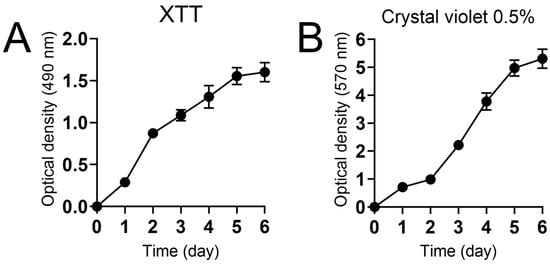
Figure 1
Open AccessArticle
Plant Functional Traits and Soil Nutrients Drive Divergent Symbiotic Fungal Strategies in Three Urban Street Tree Species
by
Yifan Xue, Yao Wang, Jiang Shi, Jingyao Wei, Qiong Wang and Wenchen Song
J. Fungi 2025, 11(6), 454; https://doi.org/10.3390/jof11060454 - 14 Jun 2025
Abstract
►▼
Show Figures
Understanding species-specific mechanisms governing symbiotic fungal responses to plant traits and soil factors is critical for optimizing urban tree “plant-soil-fungus” systems under pollution stress. To address this gap, we combined δ13C/δ15N isotope analysis and ITS sequencing for three common
[...] Read more.
Understanding species-specific mechanisms governing symbiotic fungal responses to plant traits and soil factors is critical for optimizing urban tree “plant-soil-fungus” systems under pollution stress. To address this gap, we combined δ13C/δ15N isotope analysis and ITS sequencing for three common street trees in Beijing: Sophora japonica, Ginkgo biloba, and Populus tomentosa. In S. japonica, symbiotic fungal abundance was positively associated with leaf δ15N, indicating root exudate-mediated “plant-microbe” interactions during atmospheric NOx assimilation. G. biloba, with weak NOx assimilation, exhibited a negative correlation between fungal abundance and soil available N/P, suggesting mycorrhizal nutrient compensation under low fertility. P. tomentosa showed decreased fungal abundance with increasing soil N/P ratios and specific leaf area, reflecting carbon allocation trade-offs that limit mycorrhizal investment. These results demonstrate that symbiotic fungi respond to atmospheric and edaphic drivers in a tree species-dependent manner. Urban greening strategies should prioritize S. japonica for its NOx mitigation potential and optimize fertilization for G. biloba (nutrient-sensitive fungi) and P. tomentosa (nutrient balance sensitivity). Strategic mixed planting of P. tomentosa with S. japonica could synergistically enhance ecosystem services through complementary resource acquisition patterns. This study provides mechanism-based strategies for optimizing urban tree management under atmospheric pollution stress.
Full article
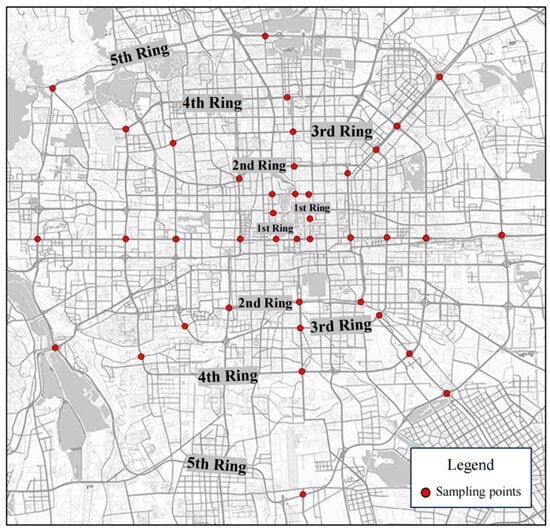
Figure 1
Open AccessArticle
Genomic and Functional Analysis of a Novel Yeast Cyberlindnera fabianii TBRC 4498 for High-Yield Xylitol Production
by
Pawarin Bonthong, Benjarat Bunterngsook, Wuttichai Mhuantong, Katesuda Aiewviriyasakul, Wipawee Sritusnee, Verawat Champreda and Hataikarn Lekakarn
J. Fungi 2025, 11(6), 453; https://doi.org/10.3390/jof11060453 - 13 Jun 2025
Abstract
The development of yeast cell factories for efficient xylose utilization and xylitol production is crucial for advancing sustainable biotechnological processes. Xylose, a major component of lignocellulosic biomass, presents challenges for microbial conversion due to its complex metabolic pathways. This study presents the genomic
[...] Read more.
The development of yeast cell factories for efficient xylose utilization and xylitol production is crucial for advancing sustainable biotechnological processes. Xylose, a major component of lignocellulosic biomass, presents challenges for microbial conversion due to its complex metabolic pathways. This study presents the genomic perspective and xylitol production capability of a novel xylose utilizing yeast Cyberlindnera fabianii TBRC 4498. Genome sequencing and functional annotation revealed key metabolic networks and genes involved in the xylose metabolism pathway, providing insights into the strain’s performance. The Cy. fabianii TBRC 4498 had excellent growth and xylose assimilation at a broad range of xylose concentrations from 40 to 140 g/L, with the highest growth rate at 80 g/L of xylose. The highest xylitol production yield (83.19 g/L) was detected from 120 g/L of xylose at 30 °C for 72 h, equivalent to 0.65 g xylitol/g xylose and 1.16 g/L/h productivity. Remarkably, Cy. fabianii TBRC 4498 produced high-purity xylitol, achieving over 95% homogeneity without forming undesirable byproducts, such as acid or ethanol. These results demonstrated the potential of Cy. fabianii TBRC 4498 as a whole-cell biocatalyst for xylitol production using high xylose concentrations, offering a promising microbial cell factory for large-scale xylitol production from lignocellulosic sugar.
Full article
(This article belongs to the Section Fungi in Agriculture and Biotechnology)
►▼
Show Figures

Graphical abstract

Journal Menu
► ▼ Journal Menu-
- JoF Home
- Aims & Scope
- Editorial Board
- Reviewer Board
- Topical Advisory Panel
- Instructions for Authors
- Special Issues
- Topics
- Sections & Collections
- Article Processing Charge
- Indexing & Archiving
- Editor’s Choice Articles
- Most Cited & Viewed
- Journal Statistics
- Journal History
- Journal Awards
- Society Collaborations
- Conferences
- Editorial Office
- 10th Anniversary
Journal Browser
► ▼ Journal BrowserHighly Accessed Articles
Latest Books
E-Mail Alert
News
Topics
Topic in
Antibiotics, Antioxidants, JoF, Microbiology Research, Microorganisms
Redox in Microorganisms, 2nd Edition
Topic Editors: Michal Letek, Volker BehrendsDeadline: 31 July 2025
Topic in
JoF, Microbiology Research, Microorganisms, Pathogens
Pathophysiology and Clinical Management of Fungal Infections
Topic Editors: Allan J. Guimarães, Marcos de Abreu AlmeidaDeadline: 30 November 2025
Topic in
Biomedicines, JoF, Pharmaceuticals, Pharmaceutics, Reports, Molecules
Natural Products to Fight Fungal Infections
Topic Editors: Célia Fortuna Rodrigues, Shasank Sekhar SwainDeadline: 30 December 2025
Topic in
Applied Microbiology, Forests, Insects, JoF, Microorganisms
Diversity of Insect-Associated Microorganisms
Topic Editors: Dilnora E. Gouliamova, Teun BoekhoutDeadline: 28 February 2026

Conferences
Special Issues
Special Issue in
JoF
Innovative Applications and Biomanufacturing of Fungi
Guest Editor: Gen ZouDeadline: 30 June 2025
Special Issue in
JoF
Diagnosis of Invasive Fungal Diseases, 2nd Edition
Guest Editor: Dong-Gun LeeDeadline: 30 June 2025
Special Issue in
JoF
Stress Research in Filamentous Fungi and Yeasts
Guest Editor: István PócsiDeadline: 30 June 2025
Special Issue in
JoF
The Potential of Trichoderma, SynCom and Their Metabolites for Enhancing Crop Yield and Resistance
Guest Editor: Jie ChenDeadline: 30 June 2025
Topical Collections
Topical Collection in
JoF
Entomopathogenic and Nematophagous Fungi
Collection Editors: Jinkui Yang, Xuemei Niu
Topical Collection in
JoF
Pathogenic Fungal Infections in Cancer and Transplant Patients
Collection Editors: Issam I Raad, Marjorie Vieira Batista









